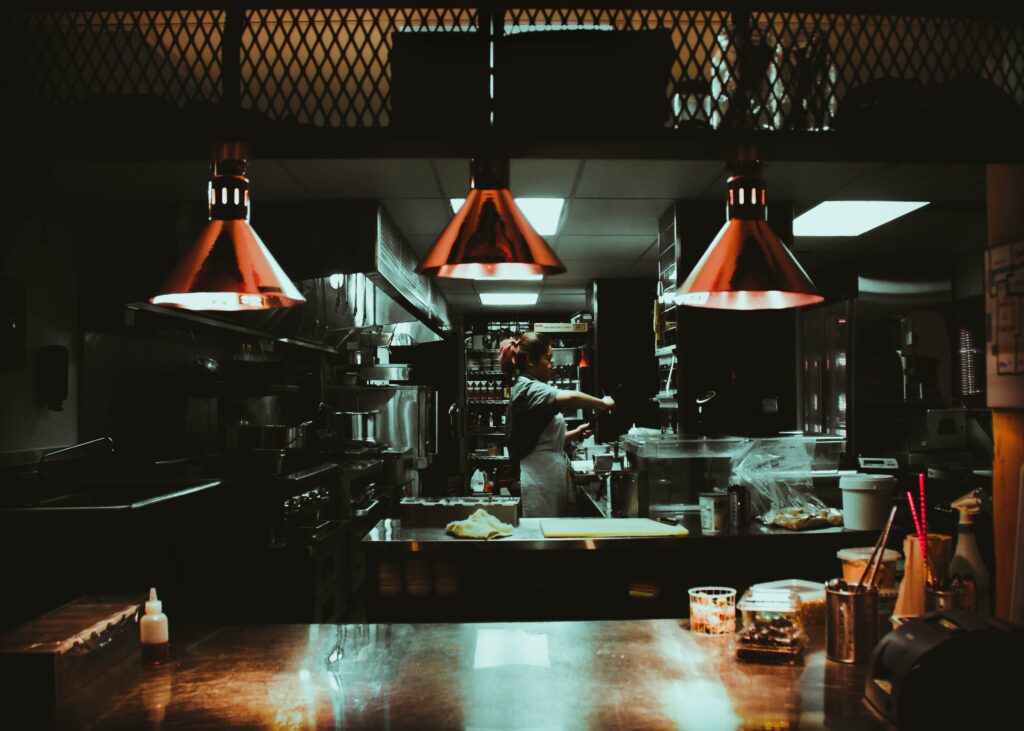I. Introduction
The restaurant industry is in the midst of a transformation, and the emergence of cloud kitchens is an important part of that. Cloud kitchens are restaurants that don’t have a physical presence, instead relying on third-party delivery services to bring their food to customers. This model has become increasingly popular in recent years, and it’s no surprise why. Cloud kitchens offer a number of advantages over traditional restaurants, including lower overhead costs and greater flexibility. But what does the future of cloud kitchens look like? In this blog post, we’ll take a look at some of the trends that are shaping the future of cloud kitchens, and how they might impact the restaurant industry.
The future of cloud kitchens is an exciting and rapidly evolving space. As the industry continues to grow, there are a number of current trends that are worth keeping an eye on. These are just a few of the trends that are shaping the future of cloud kitchens. As the industry continues to evolve, it will be interesting to see how these trends evolve and what new innovations emerge.
II. Trends to Watch
Cloud kitchens, also known as virtual kitchens, are becoming increasingly popular in the restaurant industry. As the demand for convenient and affordable food delivery continues to grow, cloud kitchens are becoming an attractive option for restaurant owners. These trends are indicative of the exciting future of cloud kitchens. As the industry continues to evolve, cloud kitchens will become an increasingly attractive option for restaurant owners.
A. Automation
As the demand for food delivery continues to grow, automation is becoming an increasingly important factor in the future of cloud kitchens. Automation can help cloud kitchens streamline their operations and reduce costs, making them more efficient and cost-effective. Automation can be used to automate processes such as order taking, food preparation, and delivery, as well as inventory management. Automation can also help cloud kitchens manage their supply chain more effectively, ensuring that orders are fulfilled quickly and accurately. In addition, automation can help cloud kitchens increase their customer satisfaction, as it can reduce the time it takes to fulfill an order and provide customers with real-time updates on their order status. Automation is also critical in helping cloud kitchens keep up with the ever-evolving food delivery landscape, as it can help them quickly adapt to changes in the market.
B. Multi-Brand Cloud Kitchens
The concept of multi-brand cloud kitchens is quickly gaining traction in the food industry. This new business model allows multiple restaurant brands to operate out of the same kitchen, sharing resources and infrastructure. This allows restaurants to reduce overhead costs, increase efficiency, and better utilize space.
In multi-brand cloud kitchens, restaurants can rent space in a shared kitchen, allowing them to save on rent, utilities, and staffing costs. This model also allows restaurants to expand their delivery area without having to invest in additional physical locations. Additionally, multi-brand cloud kitchens can help restaurants manage their inventory more effectively, as they can access a shared pool of ingredients and supplies.
Another benefit of multi-brand cloud kitchens is that they can help restaurants scale quickly. By sharing resources and infrastructure, restaurants can quickly launch new menu items or expand their delivery areas without having to invest in additional physical locations. This allows restaurants to capitalize on new opportunities and grow their business faster.
Finally, multi-brand cloud kitchens can help restaurants build a stronger customer base. By allowing customers to order from multiple restaurants in the same kitchen, customers can enjoy a wider variety of food without having to make multiple trips. This can help restaurants increase their customer loyalty and build a stronger brand.
The multi-brand cloud kitchen model is quickly becoming popular in the food industry, and it’s likely to become even more popular in the future. With its ability to reduce overhead costs, increase efficiency, and help restaurants scale quickly, it’s no surprise that this model is gaining traction. As more restaurants explore the potential of multi-brand cloud kitchens, this trend is sure to continue to grow.
C. IoT
The Internet of Things (IoT) is an important factor in the development of robotic cloud kitchens. IoT technology allows for the connection of kitchen appliances, such as ovens, refrigerators, and dishwashers, to the cloud. This connection allows for the automation of processes, such as food ordering, preparation, and delivery. By connecting these appliances to the cloud, robotic cloud kitchens can streamline the order-to-delivery process, resulting in faster delivery times and higher customer satisfaction.
In addition to automating processes, IoT technology can also be used to monitor the performance of kitchen appliances. This allows robotic cloud kitchens to detect any issues with the appliances and address them quickly. This helps to ensure that the kitchen is running efficiently and customers are receiving the best possible experience.
Finally, IoT technology can also be used to collect data from the kitchen appliances. This data can be used to improve the kitchen’s operations, such as optimizing the order-to-delivery process. Additionally, this data can be used to develop new recipes and menu items. This can help to ensure that the robotic cloud kitchen is always offering customers new and interesting dishes.
Overall, IoT technology is an important factor in the development of robotic cloud kitchens. It allows for the automation of processes, the monitoring of kitchen appliances, and the collection of data. This technology can help to ensure that customers are receiving the best possible experience from the robotic cloud kitchen.
III. Conclusion
The future of cloud kitchens is a rapidly expanding and evolving industry. As consumer demand for convenient, quality meals increases, more players are entering the market, leading to increased competition and innovation. The most successful cloud kitchens will be those that can anticipate and capitalize on emerging trends. From new delivery models and technologies to new food concepts and customer experiences, the possibilities are virtually limitless.
In conclusion, the future of cloud kitchens is very promising. With the right strategies and technologies in place, operators can capitalize on the growing demand for convenient, quality meals. By staying ahead of the curve and embracing new trends, cloud kitchens can remain competitive and profitable in the long run. It’s an exciting time for the industry and one that will bring plenty of new opportunities and challenges.





